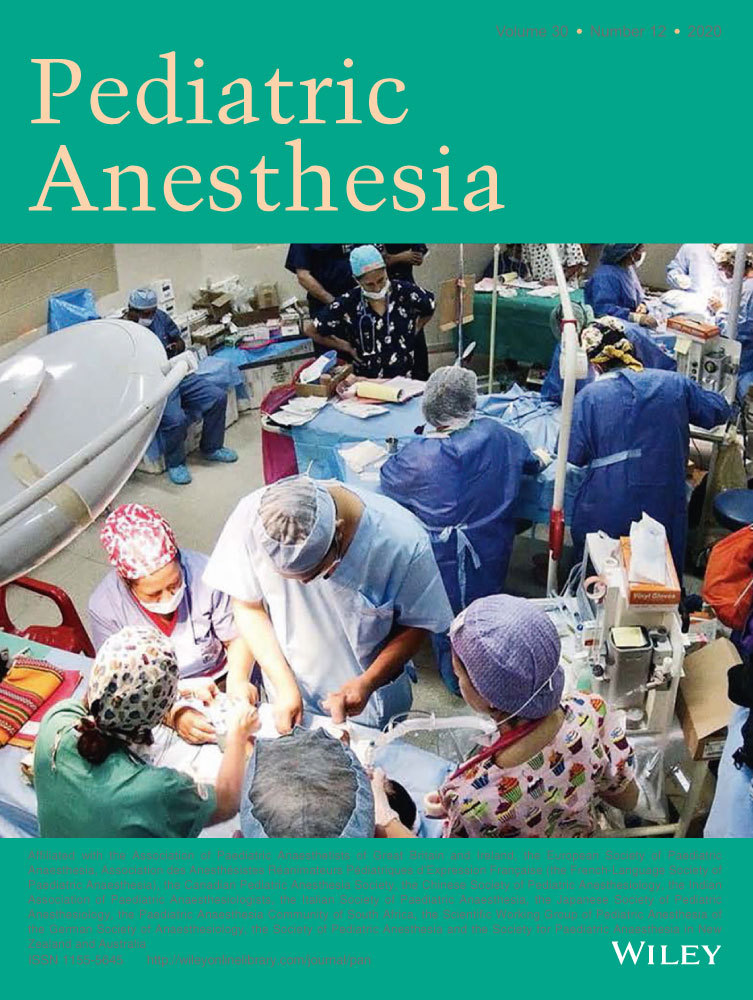The safety profile and effectiveness of propofol-remifentanil mixtures for total intravenous anesthesia in children
Abstract
Background
Total intravenous anesthesia is used in less than 10% of operations in the UK. Many pediatric anesthetists in the UK and Ireland administer total intravenous anesthesia to children using a mixture of propofol and remifentanil in the same syringe. This unlicensed drug has not been studied clinically, because of lack of Medicines and Healthcare products Regulatory Agency (UK) or Food and Drug Administration (US) approval to undertake such studies.
Aim
The aim of this service evaluation was to assess the safety profile and effectiveness of propofol-remifentanil mixtures in the pediatric population undergoing a variety of surgical procedures.
Methods
Pediatric Anesthetists in the UK and Ireland who regularly used propofol-remifentanil mixtures for total intravenous anesthesia were invited to submit data. This data were analyzed to assess the effectiveness of anesthesia and the incidence and nature of any complications that occurred.
Results
Usable data were collected from 873 patients. Mixtures were most commonly administered in gastroenterology and ear, nose, and throat procedures. Two-thirds of patients were less than 10 years old, and their mean weight was 28.7 kg. Anesthesia using the mixture alone was successful in all but 3 patients. The commonest nonserious complication was coughing (4.6%), followed by movement (3.3%). The overall incidence of serious, related, unexpected adverse events requiring intervention was 1.7%. These included desaturation (5 patients), apnea (3), abdominal/chest rigidity (2), cough requiring paralysis (2), ventilatory problems (2), and hypotension (1). Most occurred at induction, were attributable to the properties of the drugs being administered and not directly related to the use of the mixture. No life-threatening adverse events were recorded. Complications were less common if a ≤5 μg mL−1 concentration of remifentanil was used.
Conclusion
These data demonstrate that effective anesthesia can be administered to pediatric patients undergoing a wide range of procedures using mixtures of propofol and remifentanil. Serious, related, unexpected adverse events requiring intervention had a low incidence and were largely due to predictable effects of the drugs being administered. A ≤5 μg mL−1 remifentanil concentration is associated with proportionately less complications.




